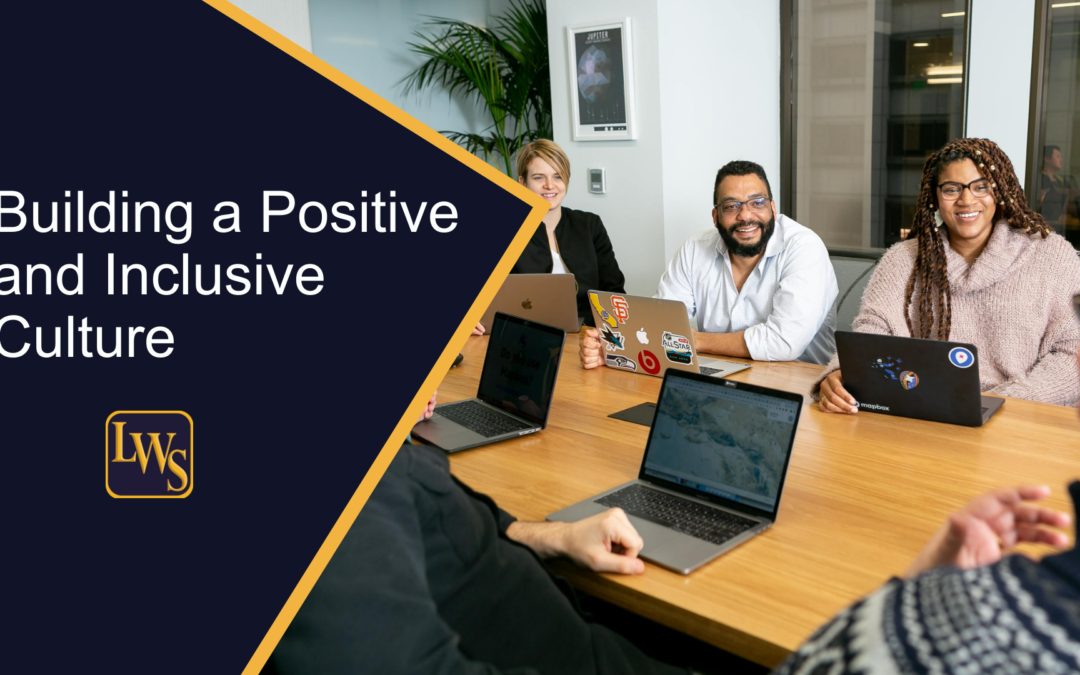At a Glance
- Learn best practices for building a positive and inclusive organizational culture.
- Understand the importance of teamwork, employee engagement, and workplace culture for high performance.
- Gain insights on fostering diversity and creating an environment where everyone feels valued.
- Join us on a journey to cultivate inclusivity and drive organizational success.
- Discover strategies for creating a welcoming and supportive work environment.
In today’s rapidly evolving business landscape, organizations are recognizing the importance of fostering a positive and inclusive organizational culture. A culture that values diversity, promotes teamwork, and prioritizes employee engagement is not only beneficial for the individuals within the organization but also contributes to overall workplace productivity and high performance.
Understanding Inclusive Organizational Culture
At the heart of building a positive and inclusive organizational culture lies the concept of inclusivity. An inclusive organizational culture embraces diversity in all its forms, including but not limited to race, gender, age, ethnicity, sexual orientation, and physical abilities. It creates an environment where every individual feels valued, respected, and empowered to contribute their unique perspectives and talents.
Best Practices for Cultivating Inclusivity
To cultivate an inclusive organizational culture, organizations can implement several best practices:
- Leadership Commitment and Accountability
Creating an inclusive culture starts at the top. Leaders must demonstrate a genuine commitment to inclusivity and set the tone for the entire organization. They should actively promote diversity, equity, and inclusion (DEI) initiatives and hold themselves accountable for fostering an inclusive environment. - Clear Communication and Transparency
Open and transparent communication is essential for building trust and inclusivity within an organization. Leaders should ensure that information flows freely across all levels, providing employees with a clear understanding of the organization’s goals, values, and expectations. - Employee Engagement and Empowerment
Engaged employees are more likely to feel included and valued. Organizations should prioritize employee engagement by providing opportunities for growth, recognizing achievements, and involving employees in decision-making processes. Empowering employees to contribute their ideas and take ownership of their work fosters a sense of belonging and drives innovation. - Training and Development
Investing in diversity and inclusion training programs can help raise awareness, challenge biases, and promote understanding among employees. By equipping individuals with the knowledge and skills to navigate diverse work environments, organizations can create a more inclusive culture. - Celebrating Diversity and Promoting Teamwork
Organizations should celebrate diversity by acknowledging and appreciating the unique backgrounds, experiences, and perspectives of their employees. Encouraging teamwork and collaboration across diverse teams fosters creativity, enhances problem-solving capabilities, and strengthens relationships within the organization.
Strategies for Sustaining an Inclusive Organizational Culture
Building an inclusive organizational culture is an ongoing process. Here are some strategies to sustain inclusivity:
- Regular Evaluation and Feedback
Organizations should regularly assess their progress in fostering an inclusive culture. Conducting employee surveys, focus groups, and one-on-one feedback sessions can provide valuable insights into areas that require improvement and help identify potential barriers to inclusivity. - Diverse Leadership Representation
Having diverse leaders in key positions sends a powerful message about an organization’s commitment to inclusivity. By promoting individuals from diverse backgrounds into leadership roles, organizations can inspire others and create a more inclusive culture. - Employee Resource Groups
Employee resource groups (ERGs) provide a platform for employees with shared characteristics or interests to connect, support one another, and advocate for inclusivity within the organization. Encouraging the formation of ERGs can foster a sense of community and belonging. - Continuous Learning and Adaptation
Inclusivity is an evolving concept, and organizations must adapt to changing societal norms and expectations. By staying informed about emerging trends, best practices, and legal requirements related to diversity and inclusion, organizations can continuously improve their efforts to create an inclusive culture.
Conclusion
Building a positive and inclusive organizational culture is not only the right thing to do but also a strategic imperative for organizations seeking long-term success. By embracing diversity, promoting teamwork, prioritizing employee engagement, and fostering a high-performance culture, organizations can create an environment where every individual can thrive and contribute their best. Let us embark on this journey together and build a brighter future for our organizations and the people within them.
What strategies can you implement to increase employee engagement and motivation?
What steps can you take to ensure that your workplace culture is inclusive and values diversity?
Are there any barriers or challenges that may hinder your progress in creating an inclusive culture, and how can you address them?
Start developing your leadership skills today with The Effective Leader or sign up today for the Effective Leadership email newsletter.
Contact me today for a complementary Strategy Session: Leadership Strategy Session
Or book me to speak at your next Event, Team Meeting, or Off-Site Retreat: Speaker Request

